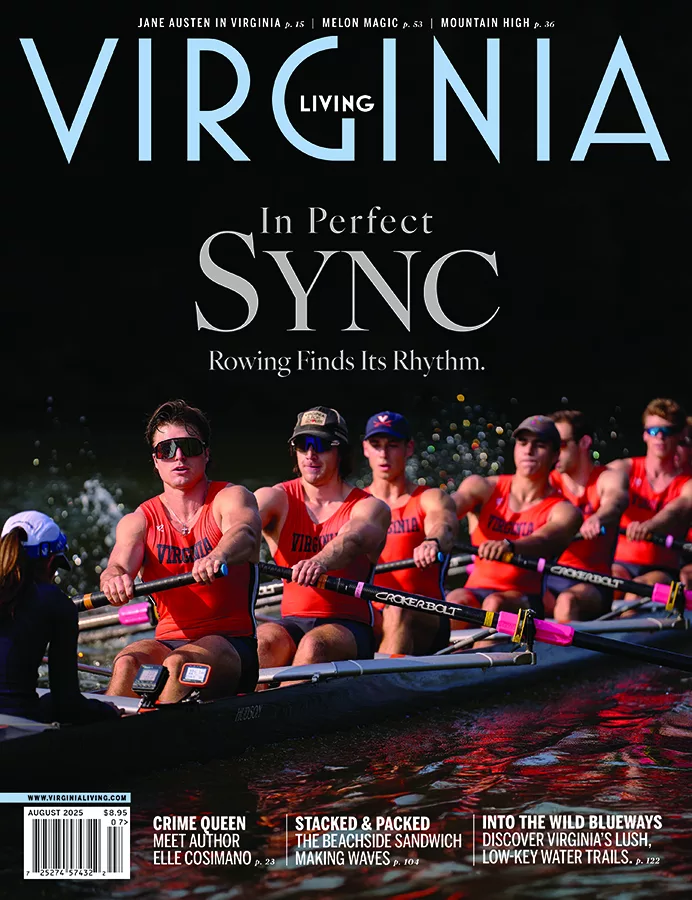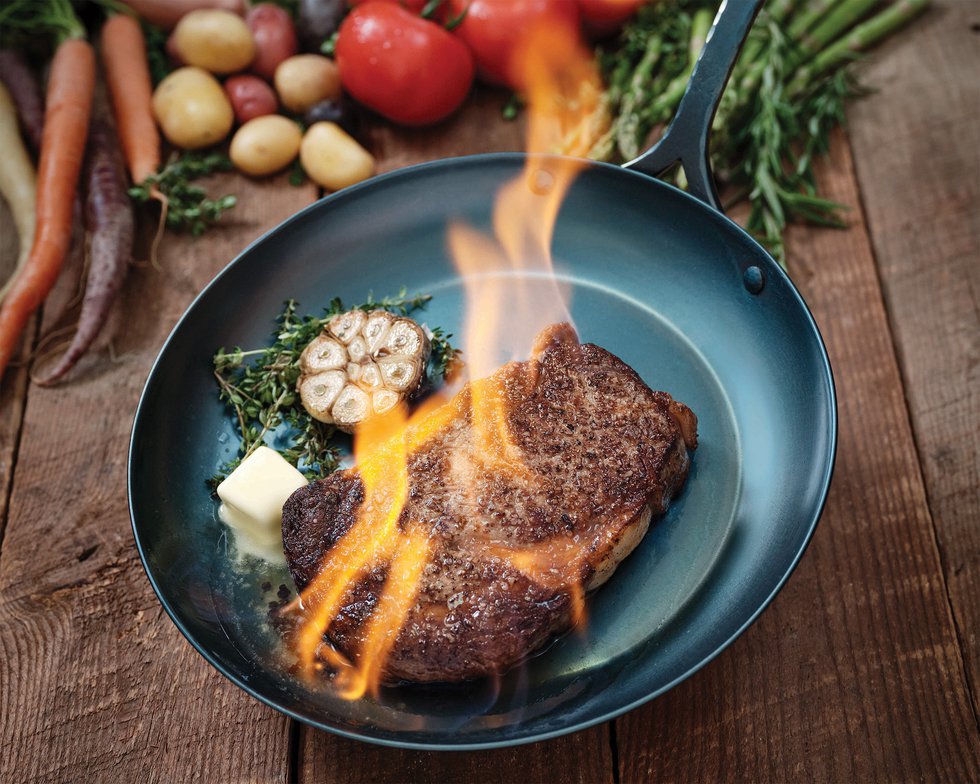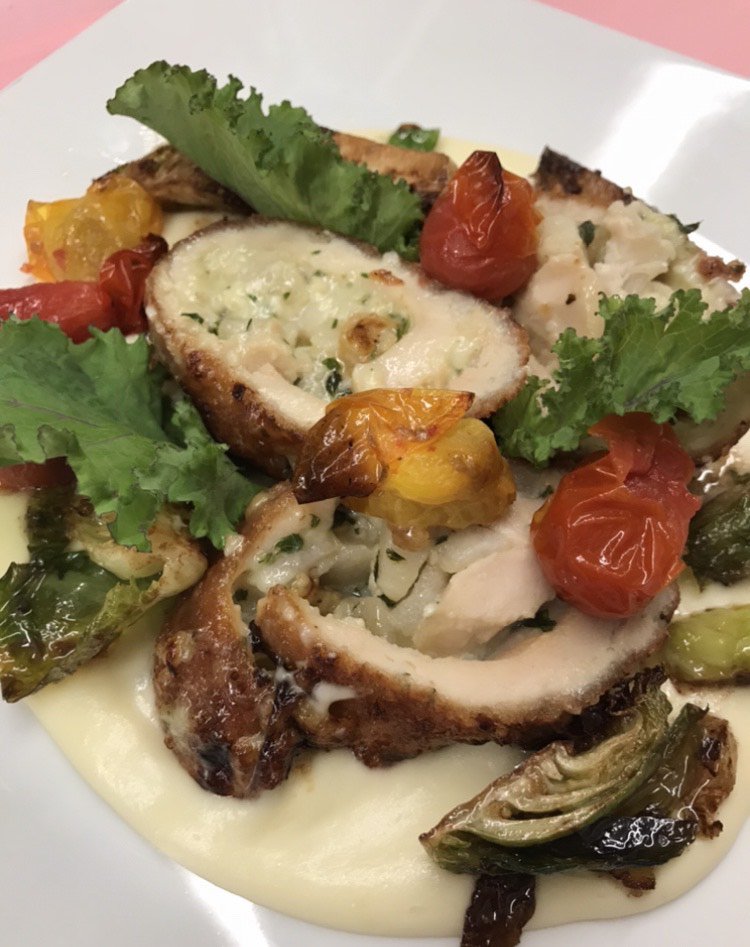Watch out whiskey—a new spirit has captivated the Commonwealth.

Map by Victoria Borges
Not only are drinkers everywhere quaffing more gin (its popularity is up by 8.3 percent), but about a quarter of Virginia distillers are making the spirit.
New flavor profiles are fueling the growth. According to Dwight Chew at James River Distillery in Richmond, traditional London dry gin must taste strongly of juniper. But awhile back the distiller at Hendrick’s Gin in Scotland invented a style that tastes a lot less piney. Today, many Virginia gins fall into the New World, or new Western, style, which uses citrus peels, herbs, spices, vegetables, and flowers along with the juniper. “One of the interesting and fun things about gin is that, so long as it has the juniper in there, you can really do whatever you want,” Chew says. He flavors his New World-style Commonwealth Gin with hops and cantaloupe. Pink gin, flavored with red fruits like strawberries, raspberries, and currants, has been particularly trendy lately.
Scott and Becky Harris at Catoctin Creek in Purcellville were among the first to make gin in Virginia. Scott says, “I give Hendrick’s a lot of credit for opening people’s minds to gin being anything other than what they were already drinking—London dry. There are secondary flavors that can accentuate a gin and make it unique and different.” He says that Becky, their distiller, created their New World-style Watershed Gin because she didn’t like traditional gin. “We went through 11 different versions until we perfected the recipe.”
That kind of experimentation is common among Virginia’s distillers. Barry Haneberg at Virago Spirits in Richmond describes individually distilling each flavor component as he developed the recipe for his Modern Gin—and he has a wall of labeled jars to back up the claim. At A. Smith Bowman Distillery in Fredericksburg, master distiller Brian Prewitt enjoys experimenting with flavors so much that the company offers four distinctly different types of gin.

Photo courtesy of KO Distilling
There are several methods of making gin. As Ian Glomski of Vitae Spirits in Charlottesville explains, gin is defined as a neutral spirit flavored with juniper, so you can “compound” it at home by stuffing flavoring agents into a bottle of vodka or moonshine and steeping it for a few weeks. Distillers usually create a neutral base alcohol (of corn, rye, potato, or almost anything else) and redistill it with the aromatics to infuse the flavors. In either case, you can be forgiven for thinking gin sounds a lot like flavored vodka; there are many similarities.
The concept of “navy strength” spirits was invented by 17th-century British sailors who mixed gunpowder and liquor to test their daily rations; if the paste caught fire, the flame was “proof” the spirit wasn’t diluted. Although flammability is no longer a factor, several Virginia distillers make navy strength gin that’s at least 57 percent alcohol (114 proof). Bill Karlson of KO Distilling in Manassas explains, “The relationship between alcohol and flavor is particularly important in gin. A stronger gin will hold more of the essential oils from the botanicals. This extra flavor makes navy strength gins ideal for mixing cocktails.”
Speaking of cocktails, gin was first paired with tonic 200 years ago to mask the bitterness of quinine, which was drunk to prevent malaria. Although modern tonic contains only trace amounts of quinine, the G&T is still one of the world’s most popular cocktails. Other favorite gin-based cocktails include the Tom Collins, the gimlet, the gin fizz, and, of course, the martini: A bone-dry martini is essentially a refreshing glass of well-chilled gin.
Recipes
Aviation Cocktail
This classic pre-Prohibition cocktail is refreshing and delicious any time of year. Make it with a London Dry-style gin, such as Virago Spirits’ Modern Gin with Oolong Tea. ViragoSpirits.com

Photo by Mindy Kinsey
2 ounces Virago Spirits Modern Gin
¾ ounce lemon juice
¹⁄₃ ounce simple syrup
1 bar spoon Luxardo Maraschino Originale Liqueur
1 bar spoon Crème de Violette
Shake all ingredients with ice, and then strain into a coupe. Garnish with a cherry. Note: For a deeper purple color, add more Crème de Violette.
Classic Gin Cocktails
Gin & Tonic
2 ounces gin
4 ounces tonic
Pour the gin and tonic into a highball glass filled with ice; stir to combine. Garnish with a lime wheel.
Martini
2 ½ ounces gin
½ ounce dry Vermouth
bitters (optional)
Combine the ingredients in a shaker with ice and either stir or shake until chilled. Strain into a martini glass and garnish with olives.
Gimlet
2 ounces gin
¾ ounce fresh lime juice
¾ ounce simple syrup
Combine the ingredients in a shaker with ice and stir until chilled. Strain into a cocktail or Old Fashioned glass and garnish with a lime wedge.
Negroni
1 ounce gin
1 ounce Campari
1 ounce sweet Vermouth
Combine the ingredients and shake with cracked ice until chilled. Strain into an Old Fashioned glass filled with ice and garnish with a twist of orange peel.
Tom Collins
2 ounces gin
1 ounce fresh lemon juice
½ ounce simple syrup
club soda
Shake the gin, lemon juice, and simple syrup with ice. Strain into a Collins glass filled with ice, top with club soda, and stir gently to combine. Garnish with a lemon wheel and a cherry.
This article originally appeared in our February 2020 issue.








